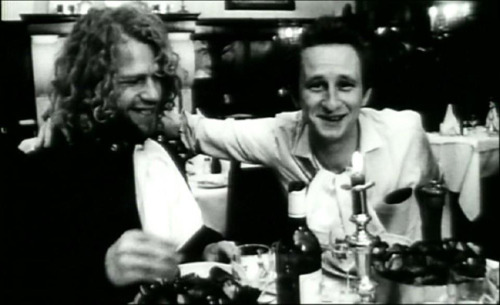Three gorgeous and compelling “genre” TV shows exhibit extraordinary elements irreparably transforming ordinary worlds: Canal+’s enigmatic zombie drama
Les Revenants (titled
The Returned for the UK)
, Channel 4’s conspiracy thriller
Utopia, and AXN/Gaumont/NBC’s investigative procedure-serial
Hannibal. Their simmering, striking style melts into substantial experiences unlike most offerings on any screen.
Past and present, real and unreal bleed through dream imagery in environments conquered by color.
Les Revenants subtly shifts into visual modes that are distant, heavily shadowed, framed, or otherwise cut-off— fostering unease through a perspective simultaneously voyeuristic and withholding, painterly and disturbing.
Utopia, whose plot centers on a graphic novel manuscript, features stunning hyper-saturated shots of nature and buildings. These shots give a macro- or micro- view of proceedings and surroundings, with people obscured or not even in sight (a trait that gains plot significance).
Hannibal’s brutal
“Brueghelian beauty ” especially affects one of its main characters; who finds it increasingly difficult to separate the acts of viewing, understanding, and becoming. The bursts of violence in all these shows is heavily stylized, but their cruelty or sudden viciousness are presented as horrifying beyond — or because of— their shocking elegance.
Humanity is haunted and hunted. Scattered through these shows are the dream-stag and murder displays of
Hannibal, Mr. Rabbit and the illustrations in
Utopia, and the titular animal and human
Revenants. Powerful images and personalities are presented as more than human, breaking past the civilized everyday into realms aligned with the primitive or supernatural. Living and dead, flora and fauna, blend in inhuman assemblage. Lines between opposing forces split and fuse in a kaleidoscopic array of allegiance and morality. Particular shots further suggest a further melding of diabolical and divine.
What is surprising about these shows is how they extend this dissolving duality to the basic physical and filial elements of existence. Inserts of gentle, pastoral nature are later revealed as omens of murder and decay. From
Utopia’s pharma-food conspiracy to the cannibalistic killers of
Hannibal and
Les Revenants (and stirrings of feral behavior in the zombies of the latter), the vital and personal act of eating is tainted. Kinship bonds arise through
cannibalism and trauma in
Hannibal, mourning and survival in
Les Revenants, and alternating paranoia and vulnerability in
Utopia. Each program centers on survival through formation and fracture of individual and group identity. Yet which of these bonds are fabrications of manipulation and pressure? What bonds are genuine?
Les Revenants,
Utopia, and
Hannibal bring to our screens three narratives that explore the hopes and fears of trust: in others, in oneself, and in one’s reality.

-large-cover.png)























